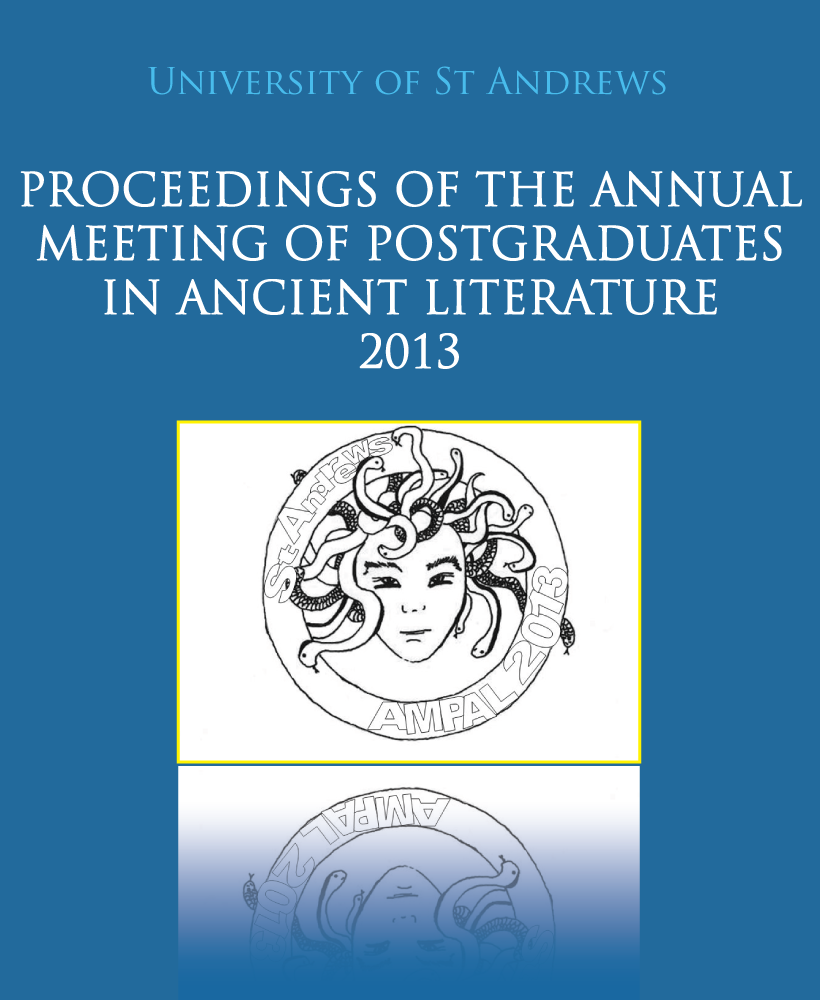IMPOSSIBLE KNOWLEDGE? MYTHICAL SEERS IN THE ILIAD
Main Article Content
Abstract
“That is why the far-shooter brought anguish upon us and will bring yet more.” (Il. 1.96). In the dramatic opening scenes of the Iliad, Calchas, described by Bremmer (1993: 152) as the “model of the archaic Greek seer par excellence”, explains to the assembled Greeks the cause of Apollo’s anger and prescribes the way to avert it. Recent evaluations of the scene have grappled with the question of Calchas’ knowledge: how does this interpreter of the birds arrive at what appears to be a remarkable insight into the mind of a god? This question was once dismissed as futile by Stockinger (1959: 16), but has since been re-examined. Calchas’ behaviour has been explained as a remnant of Hittite divination by Högemann and Oettinger (2008), as evidence for the belief in an innate, intuitive ability operating in certain seers by Flower (2008) and Di Sacco Franco (2000), or as a statement of the obvious by Trampedach (2008: 208-214), and a sign of collusion with Achilles by Latacz (1998: 96 and 2000: 57) and Taplin (1992: 54).
Homer’s seers appear unusual both in practice and description when compared to historical seers. This paper explores the peculiarities of the former as they are presented in the Iliad, paying particular attention to the depiction of Calchas in the first book. Without falling prey to the documentary fallacy, I argue that we should not expect Calchas, along with the other seers in the poem, to behave in ways which correspond to the seers of later—or even earlier—historical sources. Homer’s seers are, ultimately, complex poetic creations; they belong to the realm of the unreal.
Article Details

This work is licensed under a Creative Commons Attribution-NonCommercial-NoDerivatives 4.0 International License.
Authors who publish with this journal agree to the following terms:- Authors retain copyright and grant the journal right of first publication with the work simultaneously licensed under a Creative Commons Attribution-NonCommercial-NoDerivs License that allows others to share the work with an acknowledgement of the work's authorship and initial publication in this journal.
- Authors are able to enter into separate, additional contractual arrangements for the non-exclusive distribution of the journal's published version of the work (e.g., post it to an institutional repository or publish it in a book), with an acknowledgement of its initial publication in this journal.
- Authors are permitted and encouraged to post their work online (e.g., in institutional repositories or on their website) prior to and during the submission process, as it can lead to productive exchanges, as well as earlier and greater citation of published work (See The Effect of Open Access).
Authors retain control over their work, and may request that their paper is removed from this collection in the future by contacting the journal hosting service.

